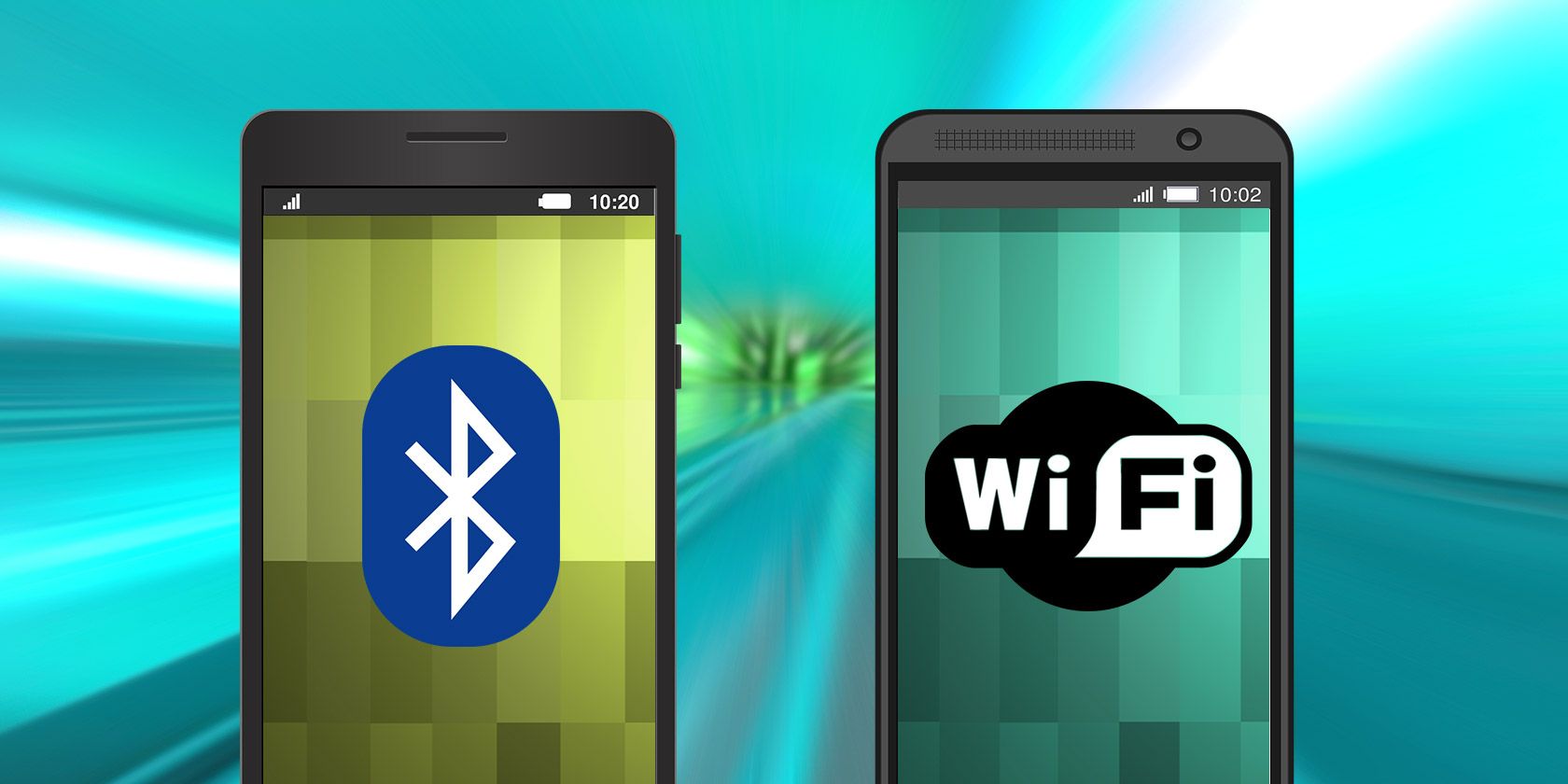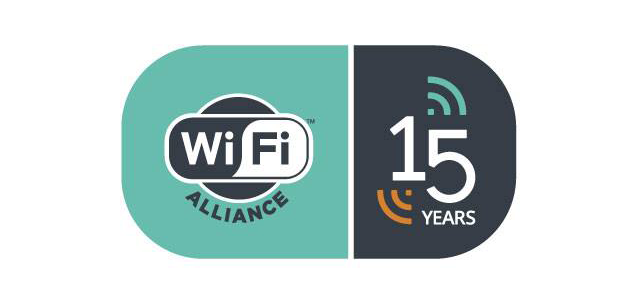If you take a peek into the future, it's hard not to envision an always-on society that features a multitude of connected devices that work in unison to make your life more convenient. We're currently not quite there yet - the main reason being the availability (or lack thereof) and the power consumption of an always-on connection between devices.
From the convenience of digital wallets, to the entirely connected home; having a secure, reliable, and efficient way to transmit data is truly the last piece to the always-on puzzle.
With two relatively new specifications -- Bluetooth 4.0 and Wi-Fi Direct -- we've put some of these concerns to rest.
While you've almost undoubtedly heard of one or both of these technologies, it's probably time to explore the differences so that we're better informed when it comes to having to make a choice. Now, while it's being billed in some circles of the web as a sort of connectivity format war, I'm actually more convinced that we'll be using bits and pieces from both as opposed to one specification truly "winning."
Let's take a look at these specifications, and what they can bring to the table.
Bluetooth 4.0
We've written about Bluetooth 4.0 and its benefits before, but for a quick refresher, let's discuss just what it is, and what early adopters are hoping it becomes.
First of all, it's important to understand that the power of Bluetooth far exceeds that of the gaudy ear-piece (do you still need one?) and that the current Bluetooth 4.0 standard is actually three different protocols; Classic Bluetooth, Bluetooth High Speed and Bluetooth Low Energy.
The true purpose of Bluetooth 4.0 is found when discovering just what it can accomplish using a low-energy signal to broadcast from device to device - or beacon to device - without depleting the battery of your mobile phone, tablet or wearable. In essence, it's an always-on signal that beams back and forth between devices in order to quickly - and without using much power - communicate between devices.
The idea behind Bluetooth 4.0 is to conserve battery life while maintaining an always-on environment by remaining dormant unless data is being shared. Once a device is paired, the connection remains active only while in use, a feature that wasn't available in previous generations of Bluetooth technology due to difficulty in pairing and connecting some Bluetooth-ready devices.
For example, if you want to share a photo between two phones via Bluetooth, the connection becomes active while the transfer begins. After completion, Bluetooth goes back into "standby" mode, meaning it won't use power when it's not needed.
Another example that is being thrown around is in the mobile payments (or cash withdrawal) realm. A consumer enables Bluetooth to transfer funds between their digital wallet account and a beacon-based payment processor (don't confuse it with NFC payments). While the two devices communicate, the phone experiences minimal battery loss. Once the transfer is complete, Bluetooth once again enters stand-by mode.
In addition to decreases in battery usage, Bluetooth 4.0 is fast. I mean, really fast. By using the 802.11ac protocol you can actually transfer data at speeds of up to 24Mbit/s. This feature is carried over from v3.0, but unlike version 3.0, these transfer speeds are now standards as opposed to only working with devices with the "+HS" logo. Now, any device that supports Bluetooth 4.0 stands to benefit greatly from faster transmission of data.
Wi-Fi Direct
Wi-Fi Direct is the chief competitor to Bluetooth 4.0. In days past, users relied on an aging device-to-device (ad hoc, and other wireless networking terms you should know) transfer method that significantly slowed speeds and caused more than a few headaches when trying to connect two devices. With Wi-Fi Direct, you can now establish a direct, peer-to-peer wireless connection without the assistance of a router. Additionally, the difficulties faced when trying to connect devices is a thing of the past, as Wi-Fi Direct includes a painless discovery tool that makes it easy to find, and connect with nearby devices.
While ease of use is one of the biggest benefits of Wi-Fi Direct, the ability to communicate without the need for a third device - in this case, a router - effectively turns each device into an access point and allows other Wi-Fi enabled devices to connect with it. Where ad hoc networks failed in slow transmission of data, Wi-Fi Direct succeeds by offering theoretical caps of 250Mbps.
If you think that all of this sounds remarkably similar to Bluetooth 4.0, you're definitely not wrong. The competition is fierce, and both standards tout a lot of the same functionality. So, which one is better? Let's take a closer look.
Bluetooth 4.0 and Wi-Fi Direct Compared.
Speed
No brainer here. Wi-Fi Direct offers speeds of up to 250Mbps while Bluetooth 4.0 lags behind at a paltry-seeming 25Mbps. While I'm somewhat skeptical that it'll come close to the touted maximum speed, there's no doubt it's significantly faster than the current Bluetooth High Speed standard.
Since Wi-Fi Direct offers such amazing speeds, it's an ideal choice for streaming options such as AirPlay and Miracast. Both are essentially ways to harness the power of these faster-than-ever connections to transmit from anything from YouTube videos to browsing activities from mobile devices to larger screens without the need for connecting the device.
Winner: Wi-Fi Direct
Range
Wi-Fi Direct has a stated maximum distance of more than 600 feet. Again, these are stated maximums which are typically not indicative of a maximum range under real world conditions. That said, even if the range were half the stated maximum, that's still pretty impressive and well within the reach of device-to-device connection in even the largest homes.
Bluetooth 4.0, on the other hand, has a maximum range that's device-dependent. The Bluetooth Special Interest Group has, however, stated that we should expect distances of at least 200 feet.
Since most of us would rely on the technology mostly within our own home (to connect to printers, multimedia, or other mobile devices) both specifications are well within the range we'd need to successfully complete these tasks. Due to that, and the fact that we're still not quite sure what the max range on Bluetooth is, we're going to call this one a tie (for now).
Winner: Tie
Security
Both specifications tout security as one of their main benefits. Bluetooth 4.0 uses AES 128-bit encryption to protect your data as it is transmitted between devices. Wi-Fi Direct, on the other hand, uses WPA2 security, and its AES 256-bit encryption.
The winner is clear, but it should be stated that even Bluetooth 4.0 is remarkably secure. I wrote a more in-depth piece on encryption a while back, but for those encryption novices amongst us, don't be caught up in numbers. Cracking even an AES 128-bit encryption by brute force would still take over a billion billion (yes, billion billion) years with current computational power, making it theoretically unbreakable.
Winner: Wi-Fi Direct, although both are more than adequate in terms of security.
Backwards Compatibility
Both devices are remarkably backwards compatible. That is to say, both are fully capable of connecting with devices that precede the releases of the current technology. Bluetooth 4.0 is compatible with any of the older Bluetooth specifications, and Wi-Fi Direct can connect to any older wireless protocol.
Winner: Tie
Power Consumption
Since both specifications are touted as "low energy" and expected to help fuel innovation in the always on society we live in, power consumption is important. I'd argue that it could be the most important aspect which determines the winner. Until current mobile battery technology improves, we can't be expected to utilize anything that significantly depletes the life of a battery.
Wi-Fi Direct is said to extend battery life by anywhere from 15 to 40 percent depending on factors such as file size, Wi-Fi protocol, range and device type.
Bluetooth 4.0 has the more impressive of the two technologies as Bluetooth Low Energy (Bluetooth LE) is said to allow a battery to run for a year or more before it's fully depleted. That said, additional factors within your device will contribute to battery drain, so this may not be fully accurate, but it's impressive nonetheless.
A number of cool technologies currently make use of Bluetooth LE. One of these is TrackR, which is a small coin-sized device that attaches to just about anything and lets you track the item using TrackR's Distance Indicator in order to find it. Lost keys, missing sunglasses, or that hard-to-find wallet or purse might just be a thing of the past.
Other technologies, like Knock, aim to eliminate the need for passwords by allowing you to unlock your devices only when your mobile phone is nearby. Once installed, the iOS app allows <Mac users to tap twice in order to log in to securely log in to a password-protected computer.
Winner: Bluetooth 4.0
The Winner
While Wi-Fi Direct exceeds Bluetooth 4.0 in so many ways, in my opinion, it falls short where it really matters, battery life. Now, that's not to say Bluetooth is going to win this debate of always-on connectivity, or that it's any better than Wi-Fi Direct, but if battery life is your primary concern then there's a clear-cut winner.
That said, both technologies have their benefits. Depending on your intended use, you can make an argument for either specification.
Do you currently own a device that uses Bluetooth 4.0 or Wi-Fi Direct? What do you like or dislike about it? Which of the two specifications would you like to see gain widespread adoption?
Image Credit: Bluetooth combo wordmark via Wikimedia Commons



